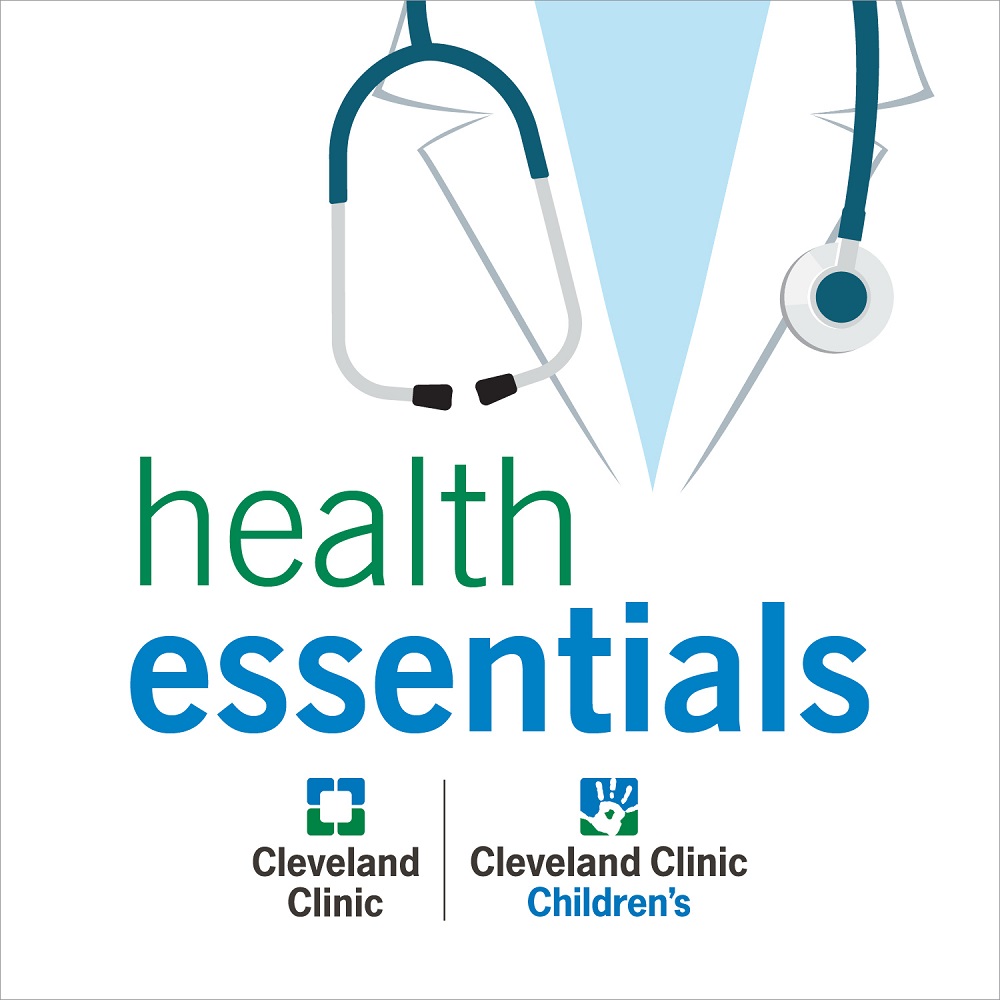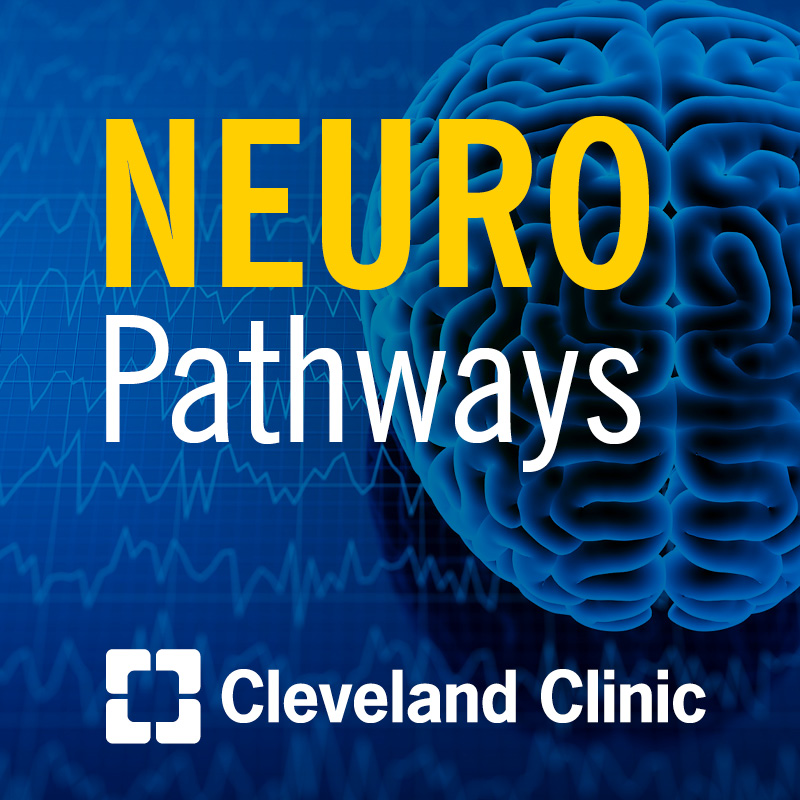Advancing Breast Cancer Care: Targeted Therapies, Sequencing, and Personalized Medicine

Kelley Kozma, DO, MS, Medical Director for Oncology at Cleveland Clinic Martin Health in Florida, to discuss how targeted therapies, next generation sequencing, and personalized medicine are transforming breast cancer care. Listen as Dr. Kozma shares how innovations like HER2-low targeting, liquid biopsy, and circulating tumor DNA are helping clinicians tailor treatments and improve outcomes.
Subscribe: Apple Podcasts | Podcast Addict | Buzzsprout | Spotify
Advancing Breast Cancer Care: Targeted Therapies, Sequencing, and Personalized Medicine
Podcast Transcript
Dale Shepard, MD, PhD: Cancer Advances, a Cleveland Clinic podcast for medical professionals, exploring the latest innovative research and clinical advances in the field of oncology.
Thank you for joining us for another episode of Cancer Advances. I'm your host, Dr. Dale Shepard, a medical oncologist, Director of International Programs for the Cancer Institute and Co-Director of the Sarcoma Program at Cleveland Clinic. Today I'm happy to be joined by Dr. Kelley Kozma, Medical Director for Oncology at Cleveland Clinic Martin Health. She's here today to discuss advancing breast cancer care through targeted therapy, next generation sequencing and personalized medicine. So welcome.
Kelley Kozma DO, MS: Thanks so much, Dr. Shepard, for having me.
Dale Shepard, MD, PhD: Absolutely. Give us a little bit of an idea what you do within the Martin Health system, which is part of our cancer care in Florida.
Kelley Kozma DO, MS: I joined Cleveland Clinic Martin Health in 2023, and I serve as the Medical Director for Oncology here for this sort of Martin area. So we cover three hospitals, Martin North, Martin South, and Tradition Hospital. I oversee clinical strategy, pathway design, quality metrics, adoption of new therapies for a solid tumor and hematologic programs here, but I also serve as a breast medical oncologist, and so I see patients every day. So it's nice to be able to have that bedside experience as well as the administrative hat to get my practice in real world grounding.
Dale Shepard, MD, PhD: So we're going to talk about breast cancer and kind of how the world may have changed over time and incorporated some of these new therapies and gotten more personalized. So maybe you could start, a lot of different people might be listening in. Give us a little bit about how breast cancer therapy has changed over time.
Kelley Kozma DO, MS: Happy to talk about the changes that have taken place for breast cancer. So back in 2015, 10 years ago, we had CD4/6 inhibitors that were only used in the metastatic setting. Now in first line therapy for hormone positive breast cancer we're using them, but now we're also using them in the adjuvant setting. So women who have more advanced cancer, stage two and above will now qualify for adjuvant CD4/6 inhibitors to improve overall survival and disease progression. We also have a lot more antibody drug conjugants, which back in 2015 or so we only had Kadcyla and now we have four additional antibody drug conjugates. So lots more options for patients that were not there before. We also have PARP inhibitors that we give in the adjuvant setting and not just in metastatic disease. So things have really advanced quite a bit over the last several years.
Dale Shepard, MD, PhD: And we think about how we've incorporated some of those changes, have most of these been developed in a metastatic setting and then they get moved forward into these other settings?
Kelley Kozma DO, MS: Yeah, absolutely. So even for our triple negative cancer patients, we're now able to give Keytruda or pembrolizumab, so we're using immunotherapies in the neoadjuvant setting, which is pretty exciting and really seeing some significant responses and complete pathologic responses with the addition of immunotherapy to these patients' care. So big changes that were once only for metastatic patients, now we're using them in curative patients.
Dale Shepard, MD, PhD: And we think about these targeted therapies. I guess these are mostly working on sort of cell surface receptors and breast cancer was primarily used to be just hormonal therapies and then HER2, what other targets look interesting that are being developed?
Kelley Kozma DO, MS: So one of the exciting things about HER2 is we're now able to treat patients who have HER2-low. So in patients who have lower expression of the HER2 on the surface of the tumor cells and not quite qualify for a HER2 positive disease, but we're able to offer them targeted therapy since there's pretty significant activity of an HER2 or trastuzumab deruxtecan, that we can provide those patients an additional option for therapy that's not chemotherapy on these HER2-low tumors. So that's a pretty exciting advancement that's recently come about. We also have NGS testing. We've got the identification of PIK3CA mutations, and those are present in about 40% of hormone-positive breast cancers. And so we have alpelisib and capivasertib that actually target even not just the PIK3CA pathway, but also AKT1 and PTEN, the whole pathway. So if you have any of those mutations, we could potentially use one of those targeted therapies. So lots of excitement in that. We also have a targeted oral SERD for ESR1 mutations, which usually arise after patients have been treated with an aromatase inhibitor. So usually on the relapse setting or refractory setting, they'll develop this ESR1 mutation and we've got elacestrant that we can utilize in that setting. We've also got Trop-2 overexpression, so triple negative breast cancers have about 80% Trop-2 overexpression on the surface of their cells, and so we can get Trodelvy, which is a very exciting drug for our triple negative breast cancer patients.
Dale Shepard, MD, PhD: If you think about, you mentioned things like antibody drug conjugates, what goes into decisions about if you have a particular target on a cell, whether you use the more traditional therapies or use these things like antibody drug conjugates?
Kelley Kozma DO, MS: A lot of it is trying to tailor our treatment towards our patients. So whenever we're looking at patients, we want to get the best response from our treatment, but what can the patient tolerate? So some of the drugs have side effects. So for example, in HER2, has about a 12% risk of interstitial lung disease, so we have to be very careful on our patient selection. Do they have any pre-existing lung disease and screening them before treatment. So that definitely goes into some decision making. Are the candidates for chemo, if they're not candidates for chemo, what other targeted therapies can we try to offer them up front?
Dale Shepard, MD, PhD: What do discussions look like as you talk to patients, and a lot of patients have sort of this fear of chemotherapy and chemotherapy is clearly bad in their view, and anything that's a pill or anything that's not chemo is clearly better. So what does that look like? Because like you mentioned, some of these other therapies clearly have side effects.
Kelley Kozma DO, MS: Yeah, no, it is definitely a different paradigm. We're really having to sit down with patients and explain that, "Yes, even though you're on a pill, you may have a really terrible rash, you can have hand-foot syndrome, you can still have the cardiovascular side effects that we might see with IV therapies." So being very, very diligent on and educating patients what to watch for, what's normal, what's not, and sort of treating these targeted therapies as seriously as possible. We have our nurse navigators that meet very regularly with patients and do frequent symptom checks, and we have them follow up in clinics similarly to how we would have a patient who's on IV chemotherapy coming in and closely monitoring them.
Dale Shepard, MD, PhD: When we think about next generation sequencing and how that has been incorporated into breast cancer management, what are some of the more common genomic abnormalities that you find in breast cancer that can be used to target therapies?
Kelley Kozma DO, MS: Anybody who walks in with metastatic breast cancer, they automatically get next generation sequencing testing just so we can have a plan moving forward and kind of plan for the future. And then at progression, I often will repeat biopsies or repeat our NGS testing if there's been some significant growth or change to see, because patients can develop new mutations or they can drop their HER2 status or become HER2-low if they were HER2 negative, and of course, hormone positive can become negative. So I think it's very important to educate patients upfront that we may have to repeat a lot of these testing to see what new mutations we might find and what we're looking for are anything we have a pathway to go down. So certainly like we had mentioned before, PIK3CA mutations, PTENS, the AKT1's, those are very important, ESR1's, knowing if they have a BRCA mutation as well. So genetic testing becomes an important thing to discuss as well with patients. So those are our main things we're looking for for breast cancer.
Dale Shepard, MD, PhD: How often are you re-biopsing for tissue versus using liquid biopsies in breast cancer management?
Kelley Kozma DO, MS: FDA's approved for anybody who's got stage two or above, we can do circulating tumor DNA to monitor patients. And liquid biopsy, I always repeat that at any progression to see if we can identify any new mutations. And sometimes we'll do a tissue biopsy if we don't see any change, and clearly the patient's not responding or we're kind of out of options. You get more data with a tissue biopsy versus a liquid depending on how much you're able to detect in the blood.
Dale Shepard, MD, PhD: You mentioned earlier about personalizing care. We think about specifically about personalized medicine, and that term has been around for a long time. What does that really mean right now in breast cancer management?
Kelley Kozma DO, MS: Right now, there's been some studies that if you use MRI radiomics to look at patients who've had neoadjuvant chemotherapy and they've had a greater than 90% response on imaging, can we omit anthracycline? And so if we have anthracycline chemotherapy from patients, we may reduce their risk of developing any severe cardiovascular issues in the future. So this is a very important thing that we could potentially have good outcomes and spare somebody an extra toxic medication that they would not otherwise need. The other thing is we follow circulating tumor DNA very closely in our stage two and above patients. So if we detect that the circulating tumor DNA, it turns positive and it was negative before, then we could do imaging early and hopefully identify a patient who has an oligometastatic disease that maybe we could radiate or surgically excise before it becomes diffusely metastatic disease, and we cannot do a metastasectomy or SBRT or some sort of treatment to a limited amount of disease recurrence.
Dale Shepard, MD, PhD: For things like the technologies like circulating tumor DNA, are those replacing more traditional things like blood-based biomarkers, like CA125, or are they being used in combination?
Kelley Kozma DO, MS: Yeah, I think I'm certainly moving away from that CA27, 25-27, 27-29, and 15-3. So those tumor markers are becoming obsolete in the setting of this circulating tumor and DNA. They're not specific, they're not as sensitive, and so this is definitely better science to touch with all of these patients.
Dale Shepard, MD, PhD: From a patient standpoint, that's great because those markers always cause tremendous anxiety for, well, I guess us and the patients.
Kelley Kozma DO, MS: Oh, yeah. Oh, yeah.
Dale Shepard, MD, PhD: As we think about targeted therapies, we think about sequencing, personalization, what do you think is most exciting and where do you think there's the gap that needs to be fixed next?
Kelley Kozma DO, MS: Yeah, I think I'm excited to see what happens with mRNA, these neoantigen vaccines. I'm excited to see how we're really harnessing patient's immune system and getting vaccines that can be so personalized to patients and they can chase these ever evolving clones that they develop. I think that's really where we're going. Our immune system is turning out to be the new frontier in oncology, and it's very exciting to see some of the data that's coming out in these trials. So I think a huge step forward. I also think that the more monitoring and the more sensitive that we're getting with the ctDNA, we'll be able to check it more frequently, detect these recurrences much earlier and hopefully will lead to a lot more curative patients.
Dale Shepard, MD, PhD: That's fantastic. Well, we appreciate you joining us and your insights today.
Kelley Kozma DO, MS: Thank you so much for having me. I appreciate it.
Dale Shepard, MD, PhD: To make a direct online referral to our Cancer Institute, complete our online cancer patient referral form by visiting clevelandclinic.org/cancerpatientreferrals. You will receive confirmation once the appointment is scheduled.
This concludes this episode of Cancer Advances. For more podcast episodes, visit our website, clevelandclinic.org/canceradvancespodcast. Subscribe on Apple Podcasts, Spotify, or wherever you listen to podcasts.
Thank you for listening. Please join us again soon.


